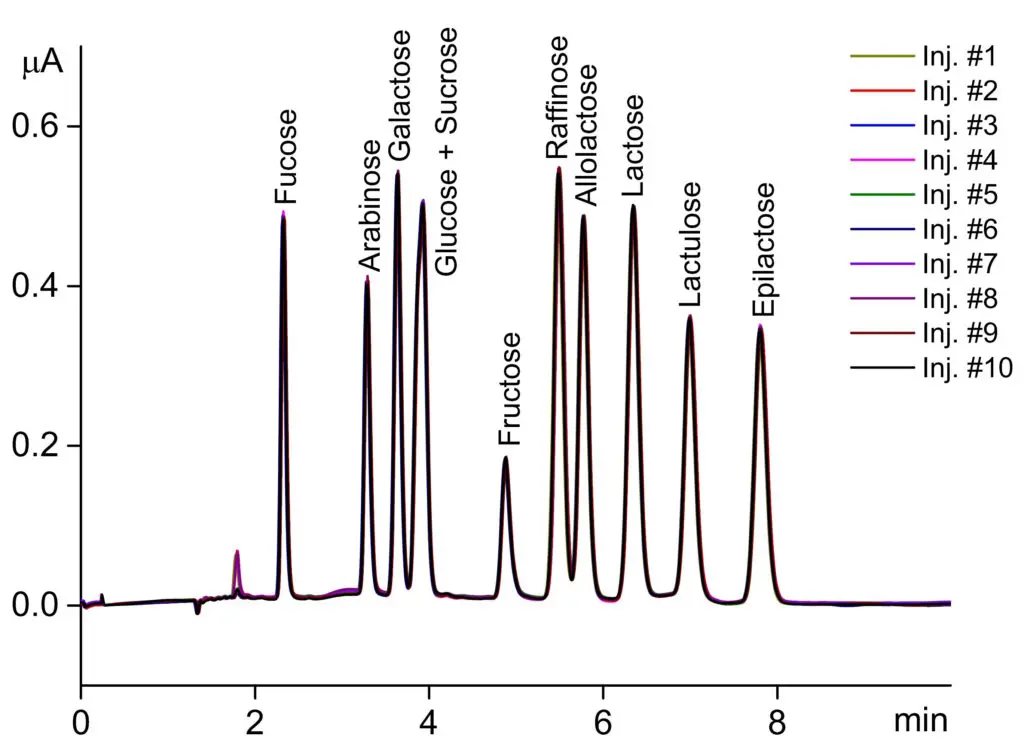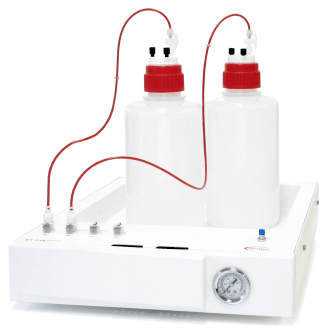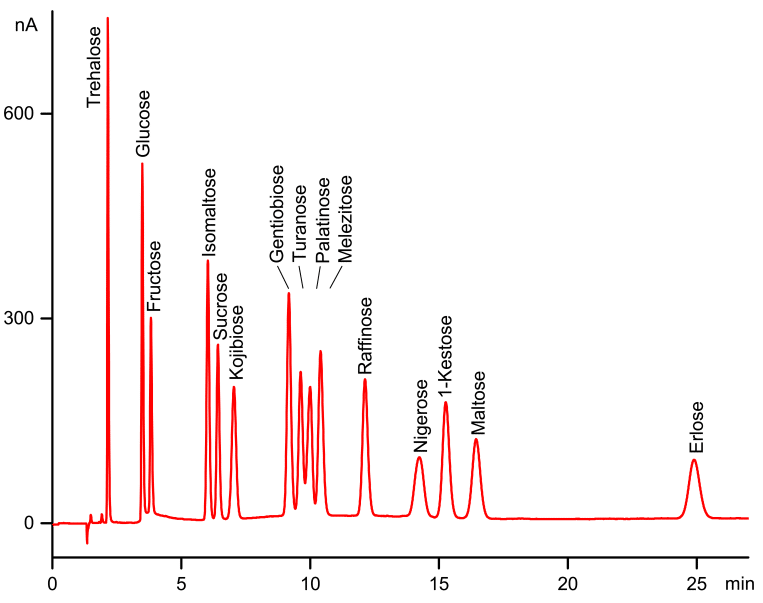Carbohydrate Analyzer
ALEXYS Carbohydrate Analyzer
The ALEXYS Carbohydrate Analyzer is based on High Performance Anion Exchange Chromatography with Pulsed Amperometric Detection (HPAEC-PAD). Dedicated flow cells are available – FlexCell and SenCell – with high pH resistance, and maintenance free HyREF reference electrode. Together with an inert gas blanketing kit for carbon dioxide free mobile phase, this assures most stable and sensitive analysis conditions. Applications are available for analysis of carbohydrates in food, beverages, plants, lactose free products, glycoproteins and others. Detection limits as low as 10 nmol/L can be obtained. See also our application notes at the bottom of this page.
Electrochemical detection of carbohydrates is done in the ‘pulse mode’. This is necessary, because EC detection of carbohydrates results in oxidation products that stick to the electrode surface. In PAD a cleaning step is applied which ensures stable and reproducible detection conditions.
For more details,
- Read our technology page on PAD.
- The full page online reader can be opened from here…
Brochure

ALEXYS Carbohydrate Analyzer
System reproducibility – overlay of consecutive injections (n=10).
Click to read brochure.
ET 210 Eluent tray
High Performance Anion Exchange Chromatography (HPAEC) is used for HPLC analysis of carbohydrates. It is only at very high pH that carbohydrates are anions and can be separated in ion chromatography. Therefore, only a few HPAEC columns can be used as they have to be used at pH 12 or higher.
At such high pH, carbon dioxide from the surrounding air dissolves in the mobile phase and forms carbonate ions. The slowly rising concentration of carbonate enters the column, it occupies functional groups of the stationary phase and changes the retention times of carbohydrates. It is therefore most important to have proper carbon dioxide removal from the mobile phase to ensure reproducible separation conditions.
The ALEXYS eluent tray has the infrastructure for keeping the solvent bottles under a blanket of an inert gas. Gas tight caps, tubing, fittings and a manometer to adjust the gas flow and to keep the gas consumption to an absolute minimum.


SweetSep – The New Benchmark for Carbohydrate Analysis
SweetSep™ is a new line of High-Performance Anion Exchange (HPAE) columns for fast and superior separation of mono-, oligo- and polysaccharides using PAD or MS detection. SweetSep is optimized for the analysis of a wide variety of carbohydrates in food and structural analysis of protein glycosylation (glycoproteins).
For more details, visit the SweetSep product page.

Analysis of 15 sugar standards on a SweetSep AEX200 column using HPAEC-PAD.
Application notes
For Application Notes using the ALEXYS Carbohydrate Analyzer paired with Antec’s SweetSep HPAEC columns, see: